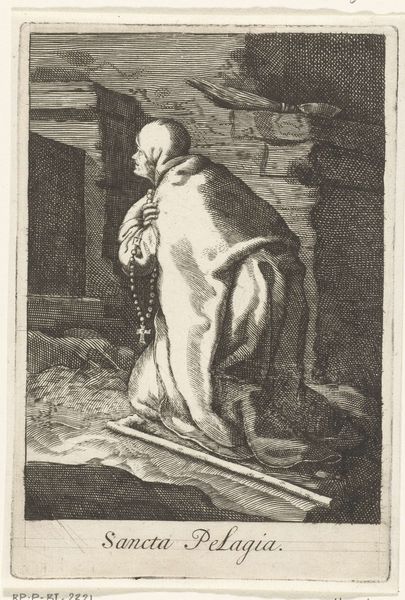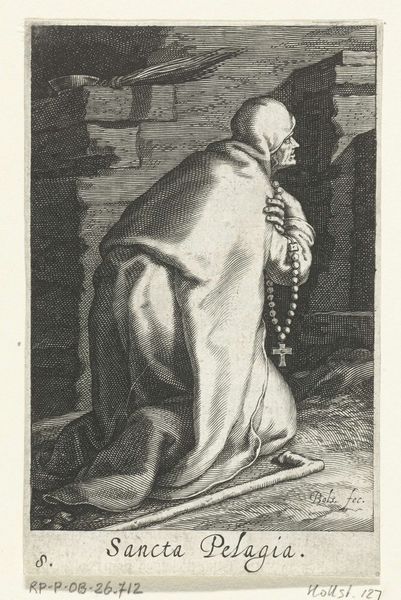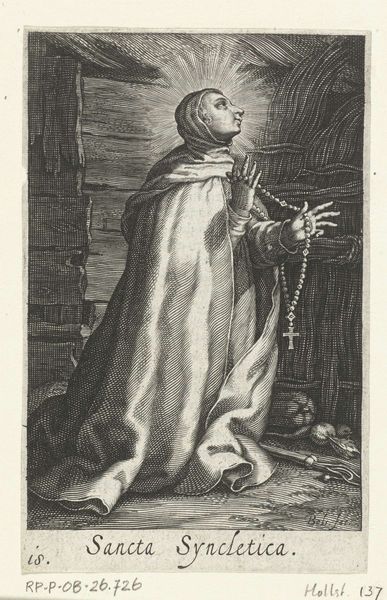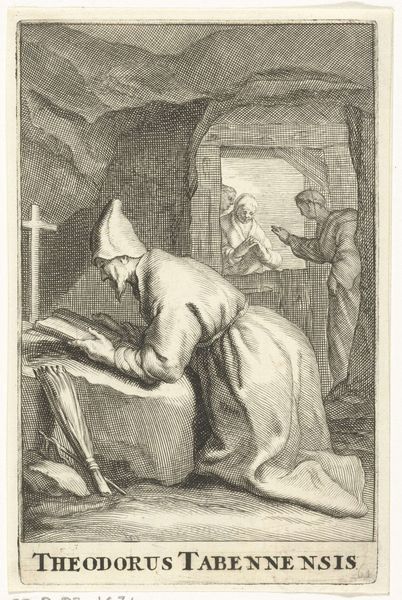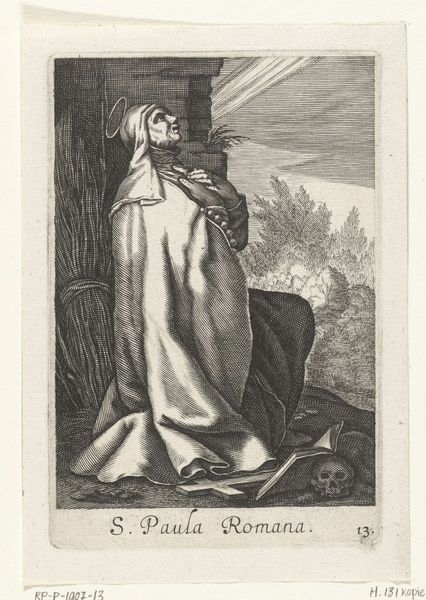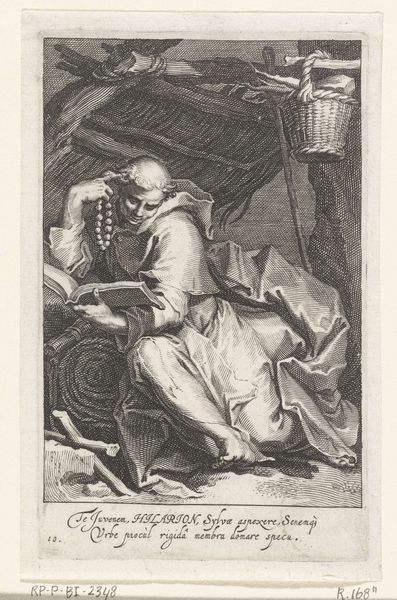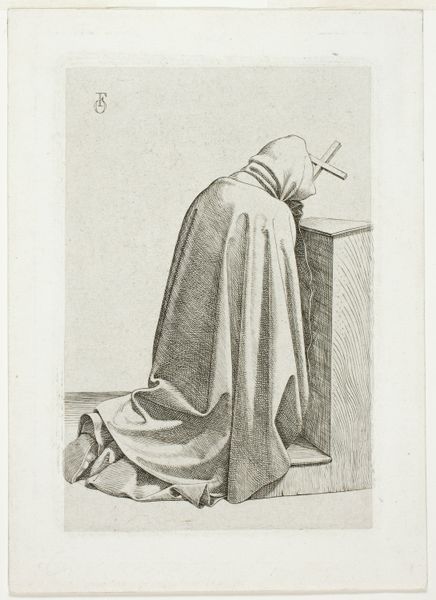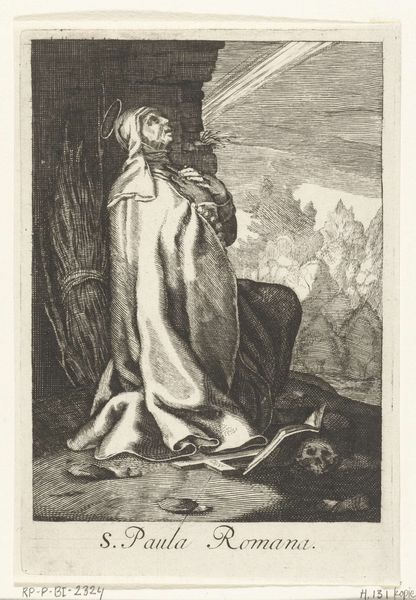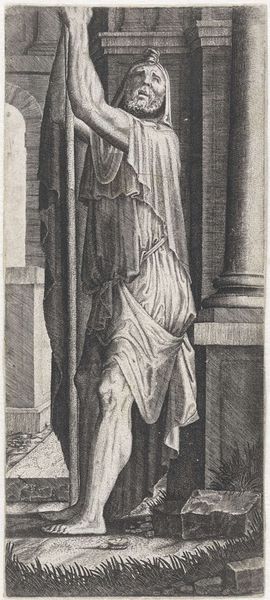
print, engraving
#
portrait
#
aged paper
#
toned paper
#
light pencil work
#
baroque
# print
#
old engraving style
#
caricature
#
personal sketchbook
#
portrait drawing
#
engraving
Dimensions: height 140 mm, width 94 mm
Copyright: Rijks Museum: Open Domain
Curator: Here we have an engraving from sometime between 1590 and 1662, attributed to an anonymous artist, titled "Heilige Pelagia van Antiochië als kluizenares"—Saint Pelagia of Antioch as a hermit. Editor: The high contrast of the lines and the aged paper gives it a somber, almost severe feel, doesn’t it? You can practically feel the coarse texture of her garments through the engraver's meticulous strokes. Curator: Indeed. Notice the linear precision; each line seems deliberate in its construction of form and light. Observe the figure’s pose, kneeling, with a rosary, emphasizing devotion and asceticism through formal design. The composition, framed within this confined space, really locks your focus on the saint's piety. Editor: But consider what the process of engraving entails—the physical labor of carving into the metal plate. The texture of the paper also informs how we engage with this piece. It wasn’t just about replicating an image, but about craft, the tactile engagement with materials to evoke an emotional response from the viewer. And the reproduction suggests broader access, disseminating the image of Saint Pelagia to many. Curator: I appreciate the emphasis on material, yet, the composition steers my eyes toward the expressive contours. The angularity of her features and the cascading lines that denote her simple robe—there's a visual language there suggesting a soul stripped bare before God. This deliberate manipulation of form evokes the Baroque aesthetic ideals. Editor: True, but that aesthetic, too, is influenced by the demands of production. What size plates were available? How quickly could images be replicated for a popular audience hungry for devotional aids? These practical realities surely dictated some of the aesthetic decisions, marrying faith and industry. Even that tonal quality of the paper speaks to its social and economic history, reflecting access and purpose beyond mere aesthetics. Curator: Your insights really deepen my own consideration of art objects. By acknowledging process alongside the artistic form we move towards a more comprehensive appreciation. Editor: Exactly! To look beyond the purely visual lets us value the means by which artistic visions come to be and their role within society.
Comments
No comments
Be the first to comment and join the conversation on the ultimate creative platform.
